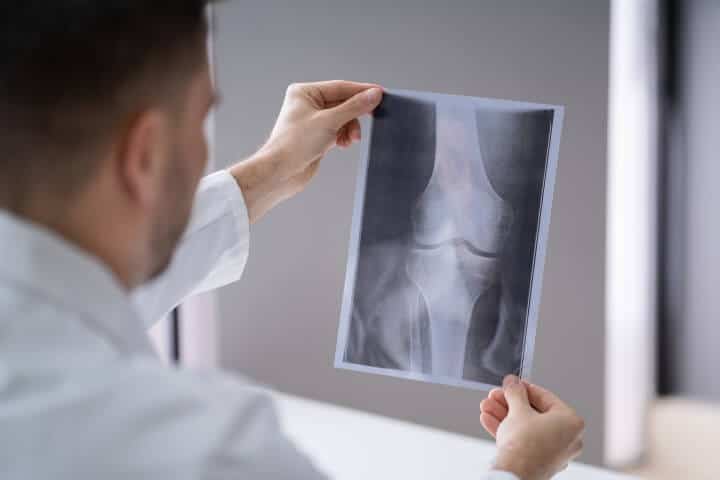Knee replacement is a standard surgical procedure that many people undergo due to arthritis and the accompanying acute knee pain and reduced mobility.
Many are scared to go under the knife and get an artificial joint due to the fear of not being able to walk properly. It can seem like a nightmare for those leading an active life with aerobic activities such as jogging as part of their daily routine.
The short answer to whether or not you can run after knee replacement is affirmative, but it has to be done taking all the precautions and only after the critical recovery period is through.
Running is recommended in the long run, as it helps rebuild bone density and muscle strength. However, on average, it takes over six months to a year to get the green signal to start running again.
With advancements in medical technology and science, those succumbing to knee surgery don’t have to worry about post-surgery recovery.
Under the guidance and care of trained physiotherapists and doctors, it is quite possible to restore optimal body mechanics with an artificial knee. However, you have to be patient and allow the body to heal.
Read on to know more about knee replacement and the journey from limping to running.
Contents
What Is Knee Replacement?
Knee arthroplasty or knee replacement is a surgical process to resurface a knee that is worn down bone-on-bone due to arthritis in most of the cases. The other reasons could be hemophilia, gout, unusual bone growth, or knee deformities causing pain and loss of cartilage.
The knee replacement procedure involves taking out the damaged bone and cartilage from the knee and replacing it with metal alloys, polymers, and high-grade plastic.
There have been advances in materials used for knee replacement surgery, ensuring complete recovery. If interested, we have an article that tackles the pros and cons of knee replacement.
Partial or Total Knee Replacement
With a total knee replacement, your surgeon will remove all of the natural parts of your knee, such as ligaments and cartilage, and then replace them with artificial ones to help relieve pain in the joint.
Partial replacements are less invasive because they replace only those parts that are diseased or damaged instead of removing everything like in a total knee replacement. Your doctor will provide you with the best medical advice on what type of surgery would be best for you.
You may like Best Chairs after Knee Replacement
Reasons for Knee Replacement
Knee replacement surgery is for people with a knee injury or arthritis. Various kinds of arthritis can affect the knee joint such as:
- Rheumatoid Arthritis: Rheumatoid Arthritis is another pertinent reason for knee replacement. In this, the immune system attacks various joint cell lining including, the knees. The immune cells target the synovial membrane that protects the cartilage, ligaments, and some tissues of the knee joints, causing them to swell. The inflammation leads to pain and limited knee movement as the membrane takes up a lot of space in the knee.
- Osteoarthritis: Osteoarthritis is one of the primary degenerative knee joint diseases that affects middle-aged and older people. This type of knee arthritis leads to the wear and tear of the joint cartilage ( the slippery tissue that lets the bones of the knee joint glide easily). This wear and tear may cause the adjacent bone next to the cartilage in the knees to crack as they rub more closely against each other with no cartilage to provide the cushioning. As a result, patients with this condition are unable to perform everyday activities like walking and climbing stairs.
- Traumatic arthritis: This kind of arthritis is due to sports injuries.
You might also like Best Knee Massager For Arthritis
Life After Knee Replacement
In the bygone era, patients were asked to rest their knees after a knee replacement surgery and not exert the joint. There was fear that the joint implant might wear off or break the cement down which is used to fix the bone. This fear was a huge dampener, especially for runners.
Physiologically it led to a high rate of weakening of muscles and bone osteoporosis.
However, with advances in robotic technology and 3D modeling, now, there are outpatient joint replacement procedures with durable materials that have shown high accuracy and complete recovery.
The need for bone cement is often eliminated as the body grows its bone into the porous part of the implant, which fixes them for good. Thus, the question arises, how soon should you restart running?
As per the latest medicine ideology, patients should gradually return to running to build muscle strength and bone density. Today, the inserts in the knee are made of plastic and are highly durable that the chance of them wearing out is very little.
However, most often, people who succumb to joint replacement surgery are those who have been trouble walking for years. Their standard gait patterns have also been altered with extreme weakness in the gluteal muscles and hips.
Thus, it takes several months of training under a trained physical therapist to restore body mechanics and then gradually start with aerobic activities like running. But athletes and amateurs with an artificial implant have returned to running outdoors and even competitive sports.
Recovery Time
Proper recovery after knee replacement is of utmost importance, and every individual might take a different time duration to heal. Usually, it takes about six months to a year for the body to regain strength and return to its previous life. As per the American Association of Hip and Knee Surgeons (AAHKS), you will
- Spend 1-3 days in the hospital and start walking with help on the day of the surgery
- Walking without assistance after 2-3 weeks
- Drive in 4-6 weeks
- Return to work in 4-6 weeks or about 3 months if your job involves physical strain
- Return to regular activities in 3 months
- Start running within 6 months to a year
However, the speed of recovery from knee replacement surgery depends on various factors such as:
- Age and overall health
- Medication, wound care, and exercise
- Strength of the knee before the surgery
- Pre and post-surgery weight
- Bodyweight
You might also like Best Knee Support For Elderly
Build-up Towards Running after Knee Replacement Surgery
With advances in medicine, running after a knee replacement surgery is no longer a distant dream. It is a reality that you can live, but it needs a lot of patience and care as you may fall and damage your new knee implant.
1. Start Slow
Knee replacement is an extensive surgery, and you cannot start running right after the surgery.
First, you need to start with core fitness, gait training, pilates, pool running, balance training, and some other basic exercises under a trained person before you can start walking.
The idea is to have overall fitness before starting to put weight on the knee joints, including losing weight and making the core strong.
2. Take Baby Steps
It may take about four to six months before you can start running. First, you should be able to walk without pain. So you can begin with taking a few steps a day for a week.
Slowly, graduate to power walking till you can go for a steady jog. That will allow the joint to adjust to the new stress load and help the surrounding muscles become stronger to protect the joint.
3. Focus On Muscle Strength While Keeping Weight in Check
Muscles around the knee joint need to be strong enough to keep it in place and protect it from further damage. So often, trainers ask you to hit the gym and take up weight training.
Weight training is an exercise that will help strengthen the muscles and keep your overall weight in check while reducing the stress on the joints. You would also need to work on other adjoining muscles.
Hip strength is of prime importance for better knee mobility. The muscles in your hips are often neglected, but they play a huge role in the stability of your knees. It is important for an athlete who has had joint replacement surgery to build up their hip strength so they can return to their sport.
Water exercises work well to improve muscle flexibility and strength. Non-weight-bearing exercise such as pool running is a preferred activity for people who have undergone partial knee replacements or other joint replacements. All these strength training exercises need to be done slowly and under the guidance of a physical therapist so as not to risk further injury and to slow down the recovery process.
4. Resistance Training a Must
Many old-timers suggest that you avoid high-impact activities as they believe that it can lead to the loosening of the knee replacement implants, but many doctors are challenging this notion. They think that implants become loose because the bone around them becomes weak.
Thus, resistance training is the best exercise for joint replacement. It helps increase bone density. Trainers use machines that focus on the core, arms, and the injured leg. It is best to start with low-impact activities that make muscles strong, lead to weight loss, and then graduate to high-impact activities.
Remember that any high-intensity fitness training must be done only with an experienced sports medicine qualified trainer.
5. Equip Yourself Well With Good Shock Absorber Shoes
Before you start running, you should ensure that you have proper shoes with good shock absorption. The lesser shock your shoe absorbs, the more the knee joint will be stressed, leading to more wear and tear.
It could also cause damage to the surrounding bone or tissue. So, besides supportive shoes, a knee brace is also a must. They keep your knees safe from the strains of running.
6. Run-on Softer Turf
Running on hard surfaces like asphalt and concrete can injure the knee joint and add to the strain. Thus, it is best to avoid them and opt for padded tracks or go off-roading on dirt trails. These running areas are softer, and hence, the ground will absorb a lot of the stress with each step you take.
You might also like TENS Machine Pad Placement For Knee Pain
Conclusion
For a long time, people were told that knee or hip replacement was the end of the road in terms of running. Conventional wisdom said that running would damage the newly replaced joint, and hence, many people would settle into a sedentary life. Unfortunately, accepting this new lifestyle was detrimental to both their physical and mental health.
Fortunately, with advancements in science and technology along with new research and thought processes, knee replacement is not the end of your running sojourn. It is only a bend.
With focused training and muscle strengthening, you can return to running and other sports activities in just a matter of six months to a year. Remember – slow and steady wins the race!





